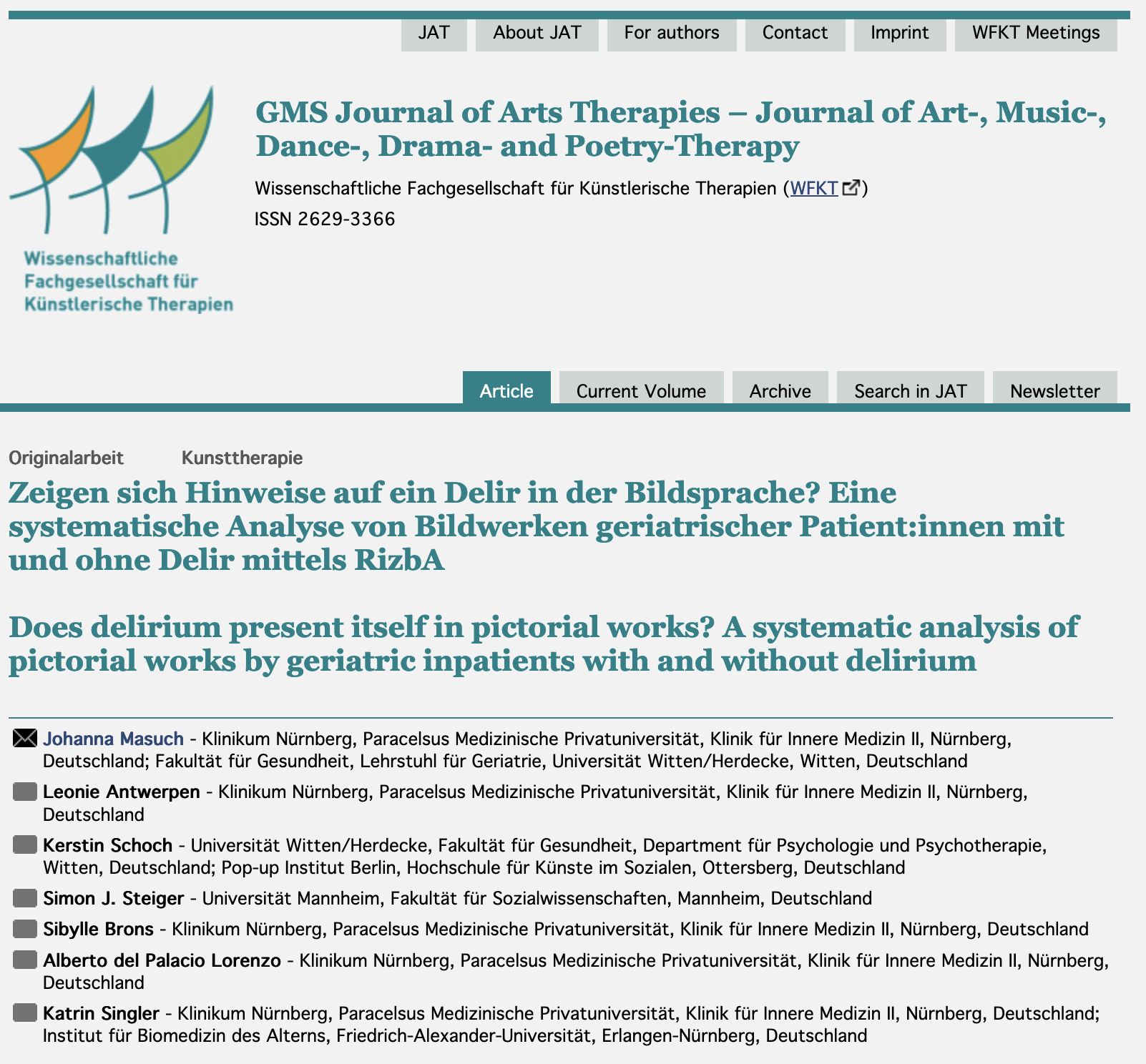Does delirium present itself in pictorial works? My colleagues at Klinikum Nürnberg just published a clinical study on this question, which uses my Rating instrument for two-dimensional pictorial works (RizbA). It is a systematic analysis of images of people in an geriatric context. As a co-author, I provided methodical advice on the use and analysis of Rizba.

abstract
background
Delirium is one of the main complications in the treatment of multimorbid geriatric patients. The two-dimensional pictorial works created by geriatric inpatients with and without delirium during art therapy sessions, suggest that there are delirium specific indicators in the patients’ imagery.
method
To identify possible art therapy specific warning signs for delirium, an online survey was conducted with 660 experts using the RizbA tool. The survey was based on 653 two-dimensional pictorial works of 71 geriatric patients with and without delirium. The presence of delirium was identified using the NuDesc screening tool followed by a medical diagnosis using DSM-V-criteria. The study comprised 182 pictorial works by patients with delirium and 471 by patients without delirium. The consulted 660 experts were art therapists and experts in picture ana- lysis, who assessed the pictorial works retrospectively, independently and anonymously. For the systematic assessment a test-retest design was used, in which each expert rated six pictures using RizbA. Statistical analysis was performed using a mixed linear model (LLM).
results
The quantitative data analysis yields differences in the pictorial expression of patients with and without delirium. Four of the six selected items of the rating instrument (item 4, 18, 19 and 24) show descriptive differences for patients with and without delirium. The two- dimensional pictorial works created by patients with delirium is charac- terized by an abstract mode of representation (item 4) and a restless (item 18), wild (item 19) and diffuse (item 24) visual effect. Furthermore, four additional noteworthy items were identified exploratively (item 2, 3, 26 und 26). These four items are characterised by fewer pictorial elements (item 2), reduced figurative representation (item 3), as well as a less precise, accurate (item 25) and reduced harmonious effect (item 26). Thus the study results provide evidence that the presence of delirium influences the two-dimensional pictorial works of affected patients.
conclusion
The results demonstrate possible art-therapy specific warning signs regarding the presence of delirium in the two-dimensional pictorial expression of geriatric patients in acute care.
thanks
for the lovely collaboration!
Masuch, J., Antwerpen, L., Schoch, K., Steiger, S. J., Brons, S., Lorenzo, A. d. P., & Singler, K. (2023). Zeigen sich Hinweise auf ein Delir in der Bildsprache? Eine systematische Analyse von Bildwerken geriatrischer Patient:innen mit und ohne Delir mittels RizbA. GMS Journal of Arts Therapies: Journal of Art-, Music-, Dance-, Drama- and Poetry-Therapy. https://doi.org/10.3205/jat000031
